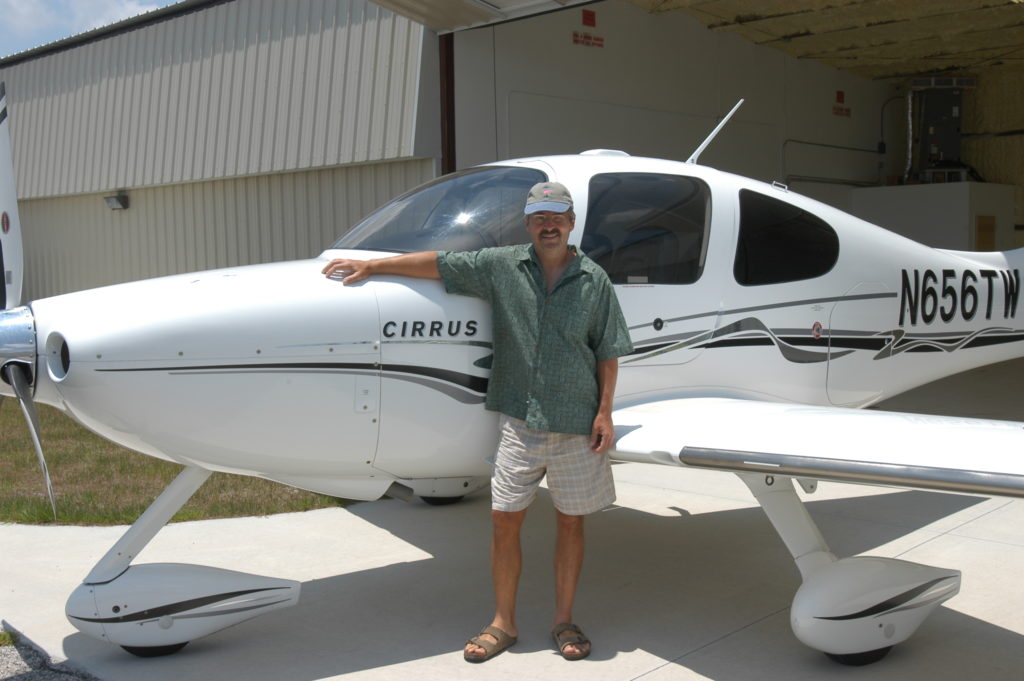Small Plane, Part I
Most of the time, my struggles with Mother Nature occur on a purely theoretical level of foundational physics. On rare occasions, however, the struggle becomes far more personal and visceral .
I started flying a few years ago as a result of two related circumstances. First, we were routinely driving 4 or 5 hours to the Florida Keys to go scuba diving, which required transiting the Miami area. For those of you who haven’t had the pleasure, it’s probably safer to fly over Miami in a poorly maintained gyrocopter than to actually drive through it. The second data point was a good friend who became a pilot. Since he is the most accident prone person imaginable, I didn’t think his becoming a pilot was a good idea. Yet he was still alive after several years of flying. The only reasonable conclusion was that flying wasn’t as dangerous as it seemed.
Since I tend to do things in reverse of their customary order (you know, like releasing a new theory in book form and then publishing scientific papers), I started my flying experience by purchasing a new high-performance airplane (310 HP) prior to receiving even a hint of flight instruction. In my defense, the Cirrus salesperson had a great pitch and an incredible product. Go up, let the customer with zero flight time do a few turns at altitude, impress them with all of the cool, state-of-the-art technology, and then close the deal shortly after landing. I was hooked, and fell in love with the plane at first flight. On the drive home, however, it slowly dawned on me that I really would have to get a license to fly this thing. Oh, that. I flew about three times a week and got my license about two weeks before I picked up my plane in Duluth, Minnesota.
Florida is a strangely shaped state, and although its road system is superb, we have a lot of swamp here, and its highways take circuitous routes around many regions that, if you were unlucky enough to drive off the road, would never be found again. I’m not talking quicksand, exactly, but you get my meaning. So, for instance, if you wanted to drive from south central Florida to its panhandle, it might take 10 or 12 hours, depending on where you need to go. Or about an hour or so in my plane, regardless of where you need to go. So, as a result of Florida’s tortured and steaming geography, I have become somewhat of an air taxi for friends and family as the need arises.
The need arose last week when Lauren’s (not her real name) mother, who lives far out in Florida’s panhandle, found herself in the hospital with a sudden illness. I have made this trip before for similar reasons, and Lauren is a fairly nervous passenger, where ‘fairly nervous’ is defined as ‘afraid of one’s own shadow’. Because of this, I only fly Lauren when the weather is picture perfect. Unfortunately, on the day in question, the weather didn’t even come close to perfect. I told her there would be some ‘rough patches’ and received repeated confirmation that she needed to go and would deal with it.
The beginning of the 90 minute west-bound flight was uneventful. I had filed a flight plan and was discussing the deteriorating weather conditions with Jacksonville Center, trying to find the smoothest way through so as to minimize Lauren’s trauma. My first hint that Lauren was going to have a life-altering experience was when we hit some barely perceptible turbulence and she grabbed the overhead support handle. Hmm. The storm was big, dark, and we were about 25 miles offshore over the Gulf of Mexico, cutting across Florida’s ‘armpit’. Unfortunately for Lauren, there was an occasional break in the clouds, and she could see the roiling sea below us. There was a solid wall of moderate rain from Atlanta to well into the Gulf, and I was looking for the quickest, smoothest way through it. My plane is equipped with satellite weather, so I can see almost everything that the ground controllers can see. Unfortunately, nothing either of us saw looked calm.
Soon enough, we were ‘in it’. The plane started bucking, the rain drummed on the windshield, and it got very dark in the cockpit. I kept trying to reassure Lauren, talking her through it, and I thought I was doing ok until I noticed that one of her pant legs was ‘fluttering’. I thought this was caused by flow from her air vent, but then noticed that the vent was off and she was literally quaking in her seat. Poor lady. Moments later we broke out into the blue, and were on our way to our destination. Sadly, Lauren’s trauma wasn’t quite over yet, because the storm was waiting for us.
I was watching it come in as we approached our destination airport, and I knew it was going to be close. I had managed to calm Lauren somewhat at this point, but alas, there was a flight ahead of us, and this delayed our landing just enough so that the storm arrived at the same time. I was about two feet off the runway, already flared for landing, when a 20 knot wind shear hit and literally ‘pulled the air out from under my wings’, causing, in spite of my immediate countermeasures, the plane to drop onto the runway and bounce (at 90 mph). Actually, it was more of a splash-bounce, since there was at least two inches of standing water on the runway.
This of course, was the last thing Lauren needed, and she was preternaturally silent as I taxied through torrential rain to the terminal. We talked in the terminal for a while, and she was surprised when I told her that she was probably the bravest passenger that I’ve ever had. “No way”, she exclaimed, “I was terrified the whole time!”. Yes, and that’s the point. Getting in a small plane and flying through bad weather to check on your sick mom isn’t brave if you aren’t afraid of flying. But she did it anyway, and she’s afraid of almost everything . That’s bravery.
Tune in next week for my report on my return flight. After I dropped Lauren off and headed back to my home base, the weather got bad .

Tags: cirrus, physics, scientific, theory
